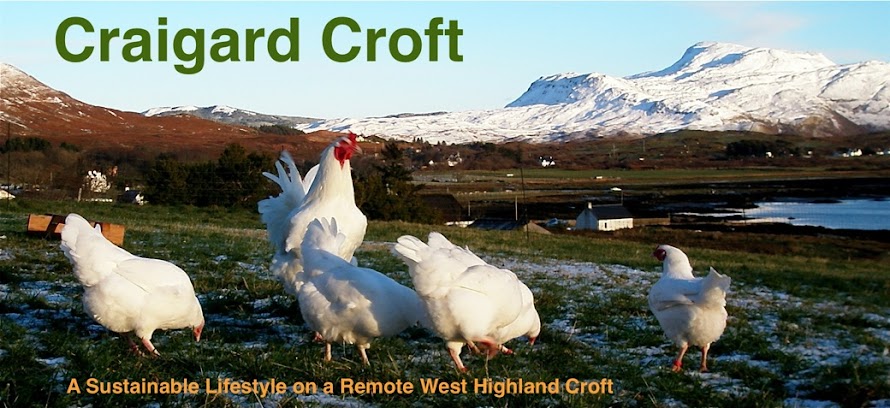If you like a scary read, try Stephen Emmott's, "10 Billion". Emmott is head of Microsoft's computational science lab at Cambridge (UK) his research shows that by 2050, less than 40 years from now, there will be at least 9 billion humans on the planet. It's 200 pages of quite large print. I read the whole thing on the return ferry trip to Tobermory.
Emmott's message ; we are destroying our global resource base and appear to be totally complacent about it. If we don't do something about it, we are, in Emmott's words, "fucked".
He does offer a solution;
" In short, we urgently need to consume less. A lot less, radically less. And we need to conserve more, a lot more."
It is predicted that demand for food will double in the next forty years. But we are already using all of the Earth's agricultural land and there is no known way of feeding 10bn people with our current patterns of consumption and farming systems.
Here's my partial solution; eat fewer livestock products, meat, eggs, dairy, grow and eat more vegetables. Why? because there are, for example, nearly 60bn cattle on earth and 60% of agricultural land is used to feed them.
The Russian Dacha small scale farming and self reliance
 |
| Russian rural idyll |
When I went to Moscow in 1998 to manage an EU Technical Assistance project in the Russian Ministry of Agriculture I was surprised to find that nearly 50% of agricultural output came from domestic plots, "dachas" in the countryside not far from the big cities. From early May until the start of winter there was a mass exodus from Moscow on Friday nights to the family dacha in the countryside. On Sunday nights the "Dachniki" returned to their city flats with loads of fresh produce.
I couldn't understand how a totalitarian, state controlled economic system allowed this. Country cottages with a bit of land were in fact encouraged by the trade unions in the 1950s as a means of feeding the urban population when the state and collective farming systems had failed to deliver. People were given a plot of usually 600 sq m on which they could build a small single story house. They had a supply of good fresh produce. better health, a place for weekend and summer holidays, banya, shashlik and illegal brewing of samagon (vodka).... result greater all round happiness.
Small scale, personal, self reliant food production on dachas and a shrinking population may put Russia in a strong position to feed itself in future and could be model for others to follow.
If you want to find out more about dachas Google;
Dacha - What does it mean for a Russian?
.




















